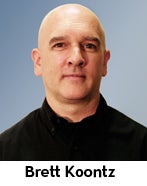 CSUN Health and Human Development students find success in helping others—and some go global. Those who are studying energy sustainability in Environmental and Occupational Health (EOH) have an angle on saving the planet. EOH faculty Brett Koontz specializes in renewable energy policy and regional governance. His approach to teaching starts with getting students to notice their surroundings and take stock of their own behaviors. “Whether we’re talking about energy, water or solid waste, I ask the students, ‘What do you see in your neighborhoods that supports resource conservation and what do you see that is working against it?’”
CSUN Health and Human Development students find success in helping others—and some go global. Those who are studying energy sustainability in Environmental and Occupational Health (EOH) have an angle on saving the planet. EOH faculty Brett Koontz specializes in renewable energy policy and regional governance. His approach to teaching starts with getting students to notice their surroundings and take stock of their own behaviors. “Whether we’re talking about energy, water or solid waste, I ask the students, ‘What do you see in your neighborhoods that supports resource conservation and what do you see that is working against it?’”
As students become self-aware, Koontz gets them to ask questions about their consumption habits. He teaches them to measure both carbon and water footprints. “I ask the students to compare themselves with another person, or family, to a national average. As they start to see the differences, I ask ‘Why do you think that you are different?’ When they compare, they begin to understand the impacts of the choices they make and the actions they take.”
Courses for non-majors often become eye-openers and lead students to major in EOH. “Historically we have seen 100 level EOH courses inspire students to choose the major. And even those who pursue other fields will add this strength to their skill-set and bring a greater understanding of sustainability to their respective communities.”
To Koontz, the term “student success” means a student becomes aware of their effect on the world, understands their impact, and incorporates positive actions at home or in the workplace. “We get them involved in caring about future generations, seeking to discover ways to bring about positive change,” he said. “I also like to give students some historical viewpoints on energy production and use. We talk about the sustainability movement over time with an emphasis on local and global perspectives. For example, Germany is generating a significant amount of solar power—and they’re succeeding in a climate with a lot less sun than Southern California. They are making solar work on multiple levels – manufacturing solar panels to produce green jobs, generating solar energy to reduce reliance on carbon fuels, and utilizing policies with decreasing government subsidies over time.”
When it comes to modeling environmental sustainability Koontz said, “I work with a three-part model that consists of the following elements: citizen participation, policy, and science/technology. I leave the advances in technology to the engineers, while the nuances of citizen participation and policy innovation pique my curiosity. New building codes make greater use of natural light and energy efficient lighting while local initiatives encourage drought tolerant landscapes, brown lawns and reductions in water usage. These practices are likely to save money, but they also reflect energy awareness and changed behaviors. Why do some citizens, countries or corporations pursue sustainable behaviors while others lag behind? Questions like this can spark curiosity that can lend itself to additional thoughts and dialog among our students and the learning community at large.”
Jean O'Sullivan
Sp2016
Photo credit:bikes and solar panels: Wikipedia Commons

